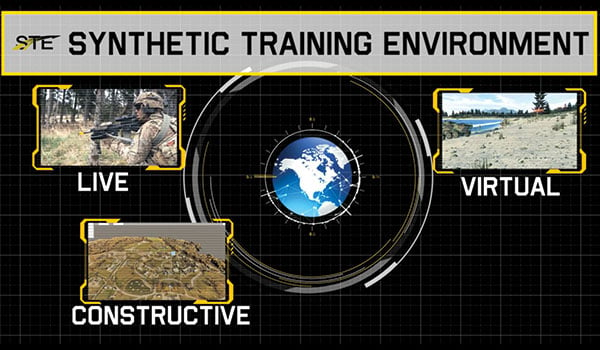
Reserve / By COL Andrew D. Cecil: Army Aviation has the opportunity to advance Aviation maintenance training into the synthetic training environment.

Aviation equipment and systems have advanced from the analog to the digital over the past two decades (UH-60A/L to UH-60M; CH-47D to CH-47F; AH-64A to AH-64D/E). The training for helicopter maintenance personnel has not changed commensurate to this change in complexity. We can and should now correct that deficiency.
Aviation maintenance training in Army units is essentially an apprenticeship program requiring close supervision, limited learner autonomy and restricted initiative. These controls represent necessary restrictions on the apprentice due to the high cost of mistakes on operational aircraft. This system restricts training at unit level principally to on-aircraft training and studying schematics. It is a system designed, implemented, and necessary for the 20th century.
Army Aviation is now solidly in the 21st century; a new system to train, certify, and track Soldier aviation maintenance training is required. Army Aviation needs a synthetic training environment (STE) aircraft maintenance trainer for training and maintaining perishable aircraft maintenance tasks without physically affecting an operational aircraft. The STE aircraft maintenance trainer should provide training in aircraft systems, subsystems, and component familiarization as well as fault identification, isolation, and remediation. Ideally, the STE would provide multiple levels of training including: guided task training with step by step instructions; unguided task training requiring the student to reference the appropriate maintenance manual; and advanced training on trouble shooting by use of faults included in the system. The system should track students by a unique ID to allow leadership to track and document individual Soldier training completed.
The Army Reserve Aviation Command (ARAC) consists of two expeditionary combat aviation brigades (ECABs), four tactical rotorcraft battalions and an aviation support battalion (ASB). The ARAC’s tactical rotorcraft maintenance footprint is spread over 11 installations and nine states. Procurement of large or expensive systems is cost prohibitive for a geographically dispersed command. The STE maintenance trainer must be cost effective and updates should be “pushed” automatically rather than requiring user actions to update to a new configuration.
In order to advance our Aviation maintenance training programs, Army Aviation should partner with the Synthetic Training Environment Cross Functional Team (STE CFT) to identify and test appropriate systems. Our force will remain in high demand and will continue to execute at a high OPTEMPO. Our Soldiers deserve the best training we can provide. Moving to a synthetic training environment allowing our Soldiers to learn at an accelerated pace based on individual initiative is critical to changing the paradigm.
COL Andrew D. Cecil is the deputy commander of the U.S. Army Reserve Aviation Command located at Fort Knox, KY.










